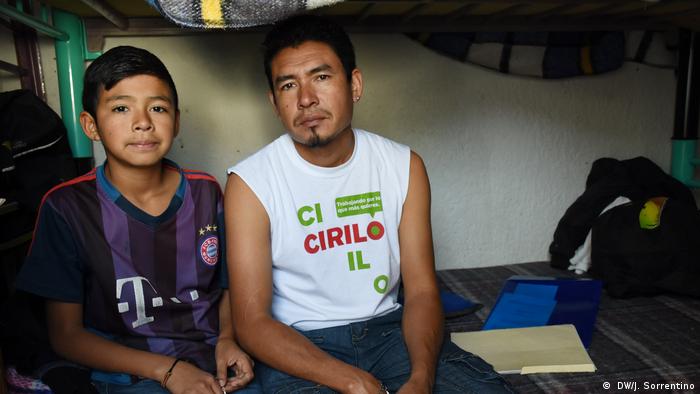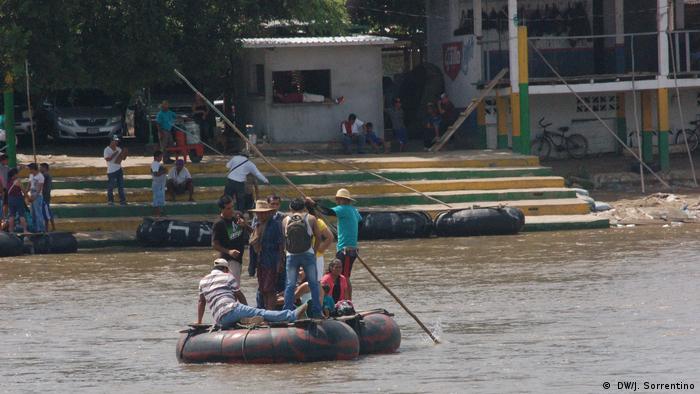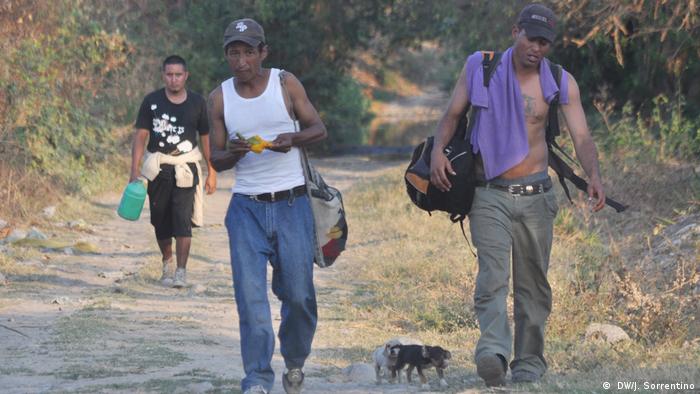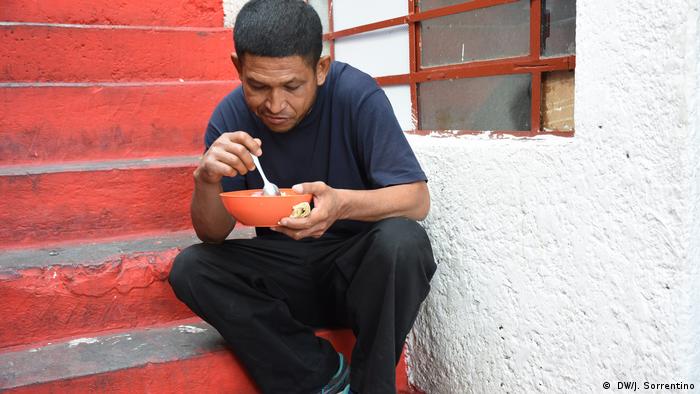US President, Trump wants billions of dollars for a border to Mexico and speaks of a migration crisis in the United States. But the is actually, in Mexico. Thousands of migrants live in uncertainty.

Manuel Laba Alvarado and his son need to back in the small bed together
Manuel Leba Alvarado sits on the bed that he shares with his 13-year-old son, Jairo. The bed is the lower part of a bunk bed and is actually only intended for a Person. “There is not a lot of space,” says Alvarado, “but this is not so bad.” The bed is in “Tochan”, the hostel for Central American migrants in Mexico city.
Alvarado addiction as well as a growing number of Central Americans asylum in Mexico. Most people don’t know whether you will stay. “I have family in Honduras – three other children,” says Alvarado, “this is where I work as a temp in the building and earn 215 Pesos a day.” The equivalent of ten Euro ranged but only to Survive. “I can send no money home to my family,” says Alvarado.
According to Claudia Leon Ang from the Jesuit migration service in Mexico city, most middle Americans don’t want to live in Mexico, but “you can’t not could in the USA, and back to you often.” Basically, you’re trapped. The United Nations estimates that each year, in the meantime, up to half a Million Central Americans without registration in Mexico. Many cross the river Suchiate, on the border between Guatemala and Mexico. The Crossing takes place in the raft, and costs the equivalent of 90 Euro cents.

Migrants cross the border River in the direction of Mexico
Escape from brutal gangs
The majority escapes from the countries of the Northern triangle: Guatemala, Honduras and El Salvador. You are one of the most violent countries in the world. Especially the two gangs are “Mara Salvatrucha” and “Mara 18” kidnap murders, mostly unpunished, and rape. In addition, they demand “renta”, i.e. extortion money from businesses and people. Because often the pay a “renta” to be allowed only in a neighbourhood of life. On the question of what would happen if someone refused, lifts Jonathan Arnoldo Varias – a man from El Salvador who lives in the hostel Tochan – his Hand to his head and imitates a gun, the presses several times the deduction.
Before 2014 you could see thousands of Central Americans on freight trains. The train called “la Bestia” – the beast. The illegal Riding on the trains is for many a cheap, fast, but also risky means of transport in the direction of the USA. A number of people were injured or died even when On the ascent and descent of the moving train.
However, since the 14. In July 2014, when then-Mexican President Enrique Peña Nieto announced the “Programa Frontera Sur”, is guarding the southern border, significantly more. Peña Nieto said the program is intended to protect the migrants. But the reality look different, say NGOs. You criticize the increasing militarization of the border. The illegal ride on the “beast” has since become heavier. Nevertheless, the number of migrants has decreased hardly – instead of on the train, the people are moving now largely on alternative routes through Mexico.

Migrants on the way from Oaxaca in Mexico, continue in the direction of the North
Alvarado and his son have been beaten up to twelve hours a day on foot through Mexico. “We ran three or four hours,” says Alvarado, “then we took a break.” For each Central Americans, the journey is joined by Mexico, with large risks. Migrant organisations estimate that 80 per cent, are attacked, 60% of women are raped. Alvarado still had the feeling that he had to take his son with him. In spite of the danger that the gangs often recruit violent boys who are only ten years old.
“The gangs will kill me”
Up to US President Donald trump’s office, and his increasingly rigorous Einwanderungspolitikwar the goal of most Central Americans in the United States. They hoped there to earn money for the family. Since this hope is more and more hopeless, many consider Mexico as a destination country. In the year 2015 3400 people from Central America sought asylum in the first six months of the year 2018, there were already some 14,000. It is not even clear whether Mexico is really a sensible Option.
“Most of the Central Americans arriving in Mexico, do not have much education,” says Francisco Senties, who works with the organization “Casa Refuigado” in Mexico City. This means that you search for work only two possibilities: Work for the minimum wage, which is situated in the capital per day, the equivalent of just under five Euro, or in the informal sector.
But before that you need to get a Job at all. “You speak listen to us and can recognize our accent, that we are migrants,” says Joel Linares Lizana. “Sometimes, we get therefore, no work.” Edgar Galeas Morena adds: “Sometimes you have to work, and then they don’t pay you, or pay you less.”
Oscar Molina Molina faced a further challenge. “I’m 69 years old and it is hard to find work,” he says. For five years he lives in the hostel now in Tochan-since he lost his apartment because he could no longer pay the rent. He takes care of the maintenance of the hostel, for this, he gets Board and lodging. He also has a small work area, where he produces a key chain, which he sold for the equivalent of just under one and a half euros. A return to El Salvador was for him impossible. “The gangs,” he says, “kill me.”

Oscar Molina Molina makes key chains to earn something
Some Central Americans have decided, in spite of all the dangers, to return. Varias in El Salvador, wife and three children, is one of them. “I have to go back,” he says. “I can’t earn enough to support my family. It is impossible. It is very dangerous in El Salvador, but there is no other way.”
Dream of the United States remains
Discrimination and low pay are not the only problems of the migrants. Many people say that Mexico is just as dangerous as their home countries. A study by Doctors without borders from the year 2017, noted that Central Americans “are subjected to the stricter U.S. border controls, more violence in Mexico.”
Regardless of this policy, many migrants are still dreaming to make it in the USA. Carlos Cuellar worked for ten years as a roofer in Brookyln, before he was sent in 2012 to El Salvador. Threats from gangs forced him to try it again and again to return to the US.

Carlos Cuellar will again try to get in the USA
Although he was expelled four more times, he wants to try it again. “I have my mother, four sisters and my daughter in El Salvador, and I can’t earn enough to help them,” says Cuellar. “If I cross the border, I’ll be excited because it is my dream to earn money. I’ll be thinking: Now I can help my family and then I’ll go and order me a large Pizza with meat and you’ll eat to the full.”